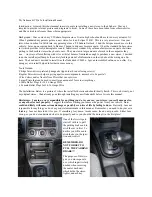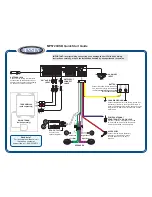
Chapter 4: Specifications
Base Server Expansion Modules
Inter-Tel
®
5000 Installation Manual – Issue 2.4, May 2008
Page 4-25
Base Server Expansion Modules
This section describes the modules that can be installed in any of the three bays at the expand
the capability of the Inter-Tel 5000 platforms. Expansion modules include:
•
T1/E1/PRI Module, 1-port – T1, T1/PRI, E1/PRI
(PRI requires additional licensing)
•
Dual T1/E1/PRI Module, 2-port – T1, T1/PRI, E1/PRI.
(PRI and second port require additional licensing)
•
Loop Start Module, 2-port – LSM-2 (no longer in production)
•
Loop Start Module, 4-port – LSM-4.
•
Basic Rate Module–S, 2-port – BRM-S.
•
Single Line Module, 4-port – SLM-4.
Single and Dual T1/E1/PRI Modules
The T1M and T1M-2 modules support T1, T1/PRI, and E1/PRI spans. T1 refers to a digital
method of transmitting voice and data. It is the 24-channel, time-division multiplex (TDM), 1.544
Mbps pulse code modulation (PCM) method used in the United States.
The T1 standard, which was developed as a method of reducing cabling and increasing
transmission quality between distant COs, is a subset of a multi-level Digital Signal (DS)
scheme. T1 refers to the DS1 rate as transmitted across any type of media, such as copper
wire, optical fiber, or microwave.
Since each T1 span actually consists of 24 individual circuits (or channels) multiplexed together,
it is often less expensive to purchase a single T1 span than it is to purchase multiple individual
trunks. Each of the 24 T1 channels can be programmed as a Loop Start, Ground Start, DID,
E&M, or OPX (or as unequipped). Any combination is possible.
“Fractional” T1, often called FT1, is a special T1 service where only a portion of the 24 channels
are used and paid for. To implement FT1 equip only those circuits that are provided.
To interface with the public network, each T1M and T1M-2 module is equipped with an on-board
Channel Service Unit (CSU). Since the CSU is on-board, the programmer must select the line
build-out (LBO) attenuation, which is available from the T1 provider.
To use an external CSU instead, the module can be set to DSX mode. However, the module
and the external CSU must be located in the same building, and the cabling between them must
be no longer than 133 ft.
When a T1 span connects the system to the public network or to another telephone system, the
two endpoints must communicate at the same frequency. Since it is practically impossible for
both endpoints to have clocks running at identical frequencies, one endpoint is given master
clock status and the other endpoint is given slave clock status. The slave clock can then extract
and lock-on to the master clock frequency from the incoming T1 data. This master–slave
synchronization is programmed in the database. When connected to the public network, a T1,
T1/PRI or E1/PRI port should be designated as a public network slave.
When voice data is transmitted over a T1 span, a framing bit is added so that the receiving end
can recognize where the information begins and ends, which is effective as long as the clock
circuitry of the two endpoints is synchronized.
The system supports the two major types of framing schemes in use today: D4 Superframe,
which is the most common, and Extended Superframe (ESF), which is required to support
future ISDN and DMI features. For voice transmissions, D4 Superframe is adequate. ESF is
more reliable and efficient for data transmissions.
Содержание Inter-Tel 5000
Страница 1: ...Inter Tel 5000 M I T E L Installation and Maintenance Manual ...
Страница 2: ......
Страница 3: ...Issue 2 4 May 2008 Inter Tel 5000 Installation and Maintenance Manual Part Number 580 8000 ...
Страница 4: ......
Страница 6: ......
Страница 20: ......
Страница 62: ......
Страница 366: ......
Страница 432: ......
Страница 467: ......
Страница 468: ...Part No 580 8000 Issue 2 4 May 2008 A691 9111A ...
















































